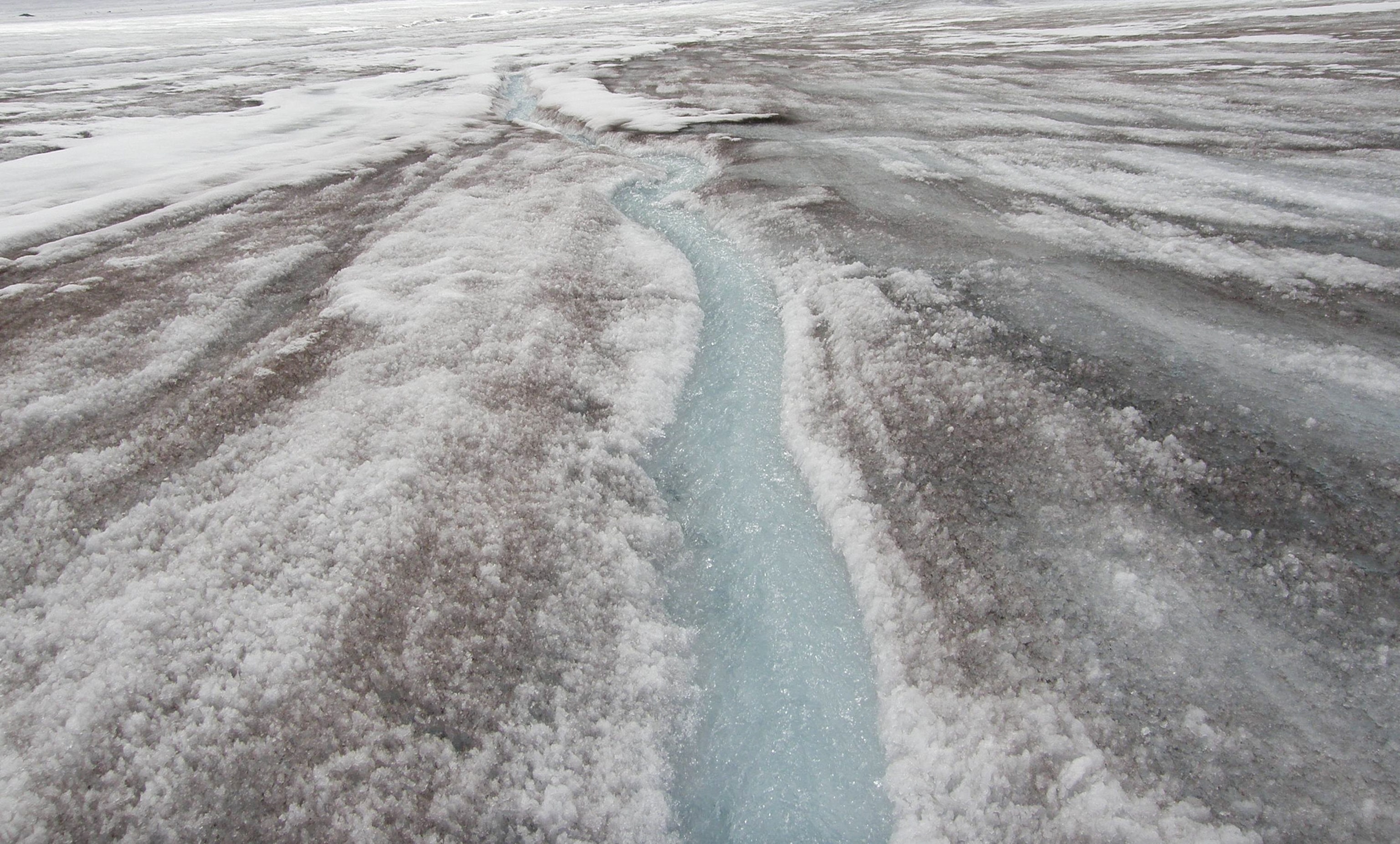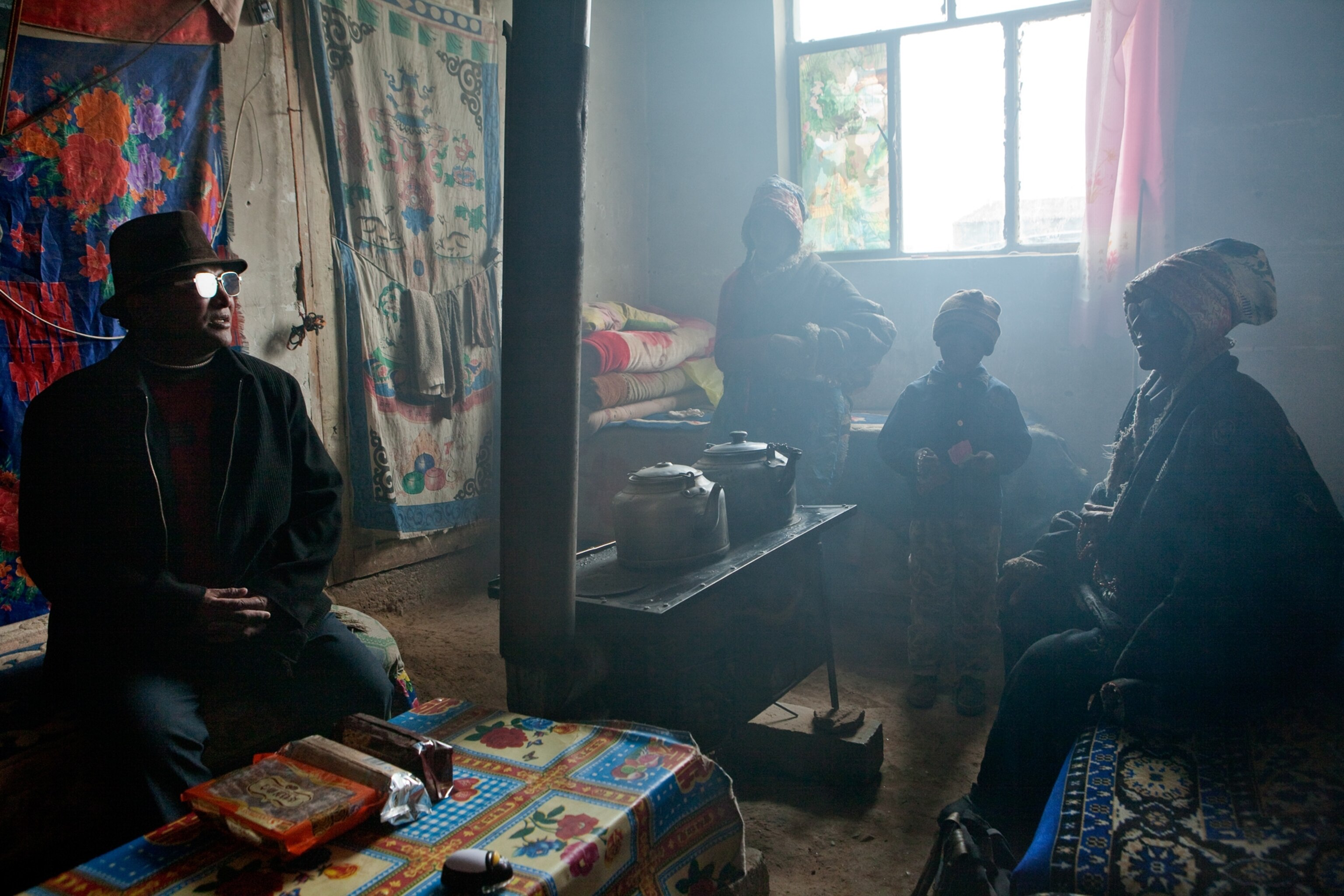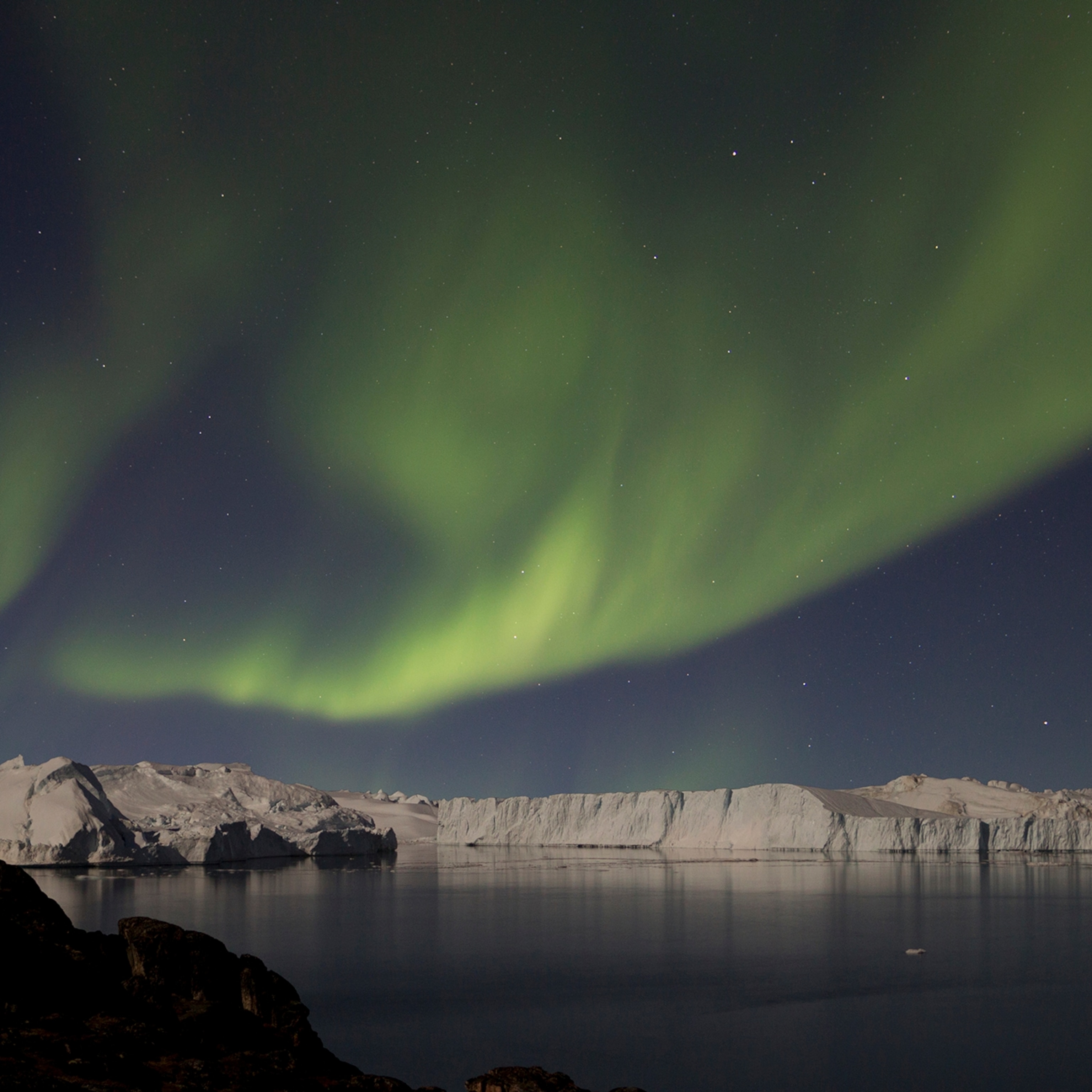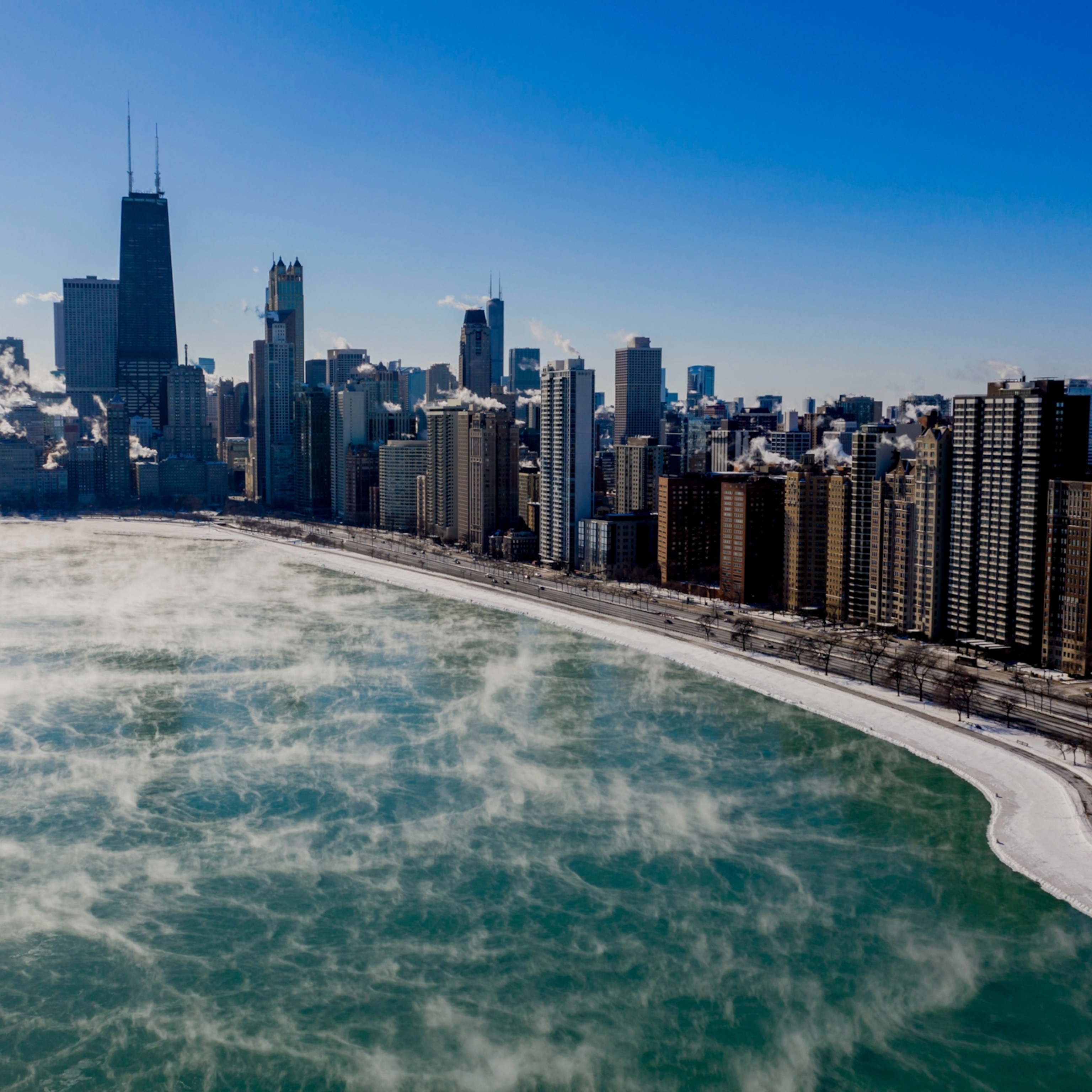
Soot and Dirt Is Melting Snow and Ice Around the World
New report highlights increased loss in Greenland ice cap from dust and soot.
It's easy to imagine new snow so bright that we must avert our eyes even while wearing sunglasses. What scientists are discovering, though, is this brilliant whiteness of snow and ice is increasingly being dimmed by air pollution.
From Greenland's ice sheets to Himalayan glaciers and the snowpacks of western North America, layers of dust and soot are darkening the color of glaciers and snowpacks, causing them to absorb more solar heat and melt more quickly, and earlier in spring.
This trend toward darker snow from soot and dirt has been observed for years. Sources vary from dust blowing off deserts and snow-free Arctic land, to soot from power plants, forest fires, and wood-burning stoves. But now soot and dust are taking a greater toll, according to a report released this week, causing Greenland's ice sheets to darken—and melt—at a faster rate in spring than before 2009.
This matters because Greenland is mostly covered in ice, and meltwater from thawing continental glaciers like those found in Greenland and Antarctica flows into the ocean, causing seas to rise. Greenland, the world's largest island, holds enough ice that if it all melted seas would rise—likely over centuries—up to 20 feet.
This darkening of Greenland ice by soot and dirt will probably cause seas to rise faster toward the end of this century than previously forecast. (Reports last month indicated portions of the Antarctic ice sheet were also melting faster than forecast.)

Whiteness and Melting
Albedo, or "whiteness," is a scientific term meaning reflectivity. It is the fraction of solar energy that Earth reflects back into space. Lighter colored areas of Earth—those covered in new snow and ice—reflect most solar energy back into space. Darker areas of Earth—oceans, forests, and cities—absorb more solar heat.
This whiteness is why snow-covered areas can stay cold, while dark spots like pavement and black roofs heat up. So when the white color of snow and ice is darkened by dirt and soot, more of the sun's heat is absorbed, and snow and ice melt faster.
Researchers have also attributed some Arctic ice cap melting to darkening from soot. Further, as Arctic Ocean ice thaws in spring and summer, more adjacent dark, heat-absorbing water is exposed. This dark water is warmed by the sun's rays, and in turn melts even more ice nearby. In what scientists call a "feedback loop," melting causes even more melting, more heat-absorbing dark water is exposed as more ice melts, and even more ice melts because more dark water is exposed, and so on.
Satellite images in 1979 first revealed the size of the Arctic ice cap, and since then Arctic ice has retreated about 12 percent per decade in summer. This is a trend that has accelerated since 2007, driven primarily by rising global temperatures. In September 2012 nearly half the ice cap melted in summer, leaving a record low amount of ice, and in May 2014 Arctic sea ice extent was third lowest on record.
Showing this dramatic Arctic ice loss is one of the most striking changes in the National Geographic atlas's long history, according to National Geographic Geographer Juan José Valdés, who calls it the map's "biggest visible change other than the breakup of the U.S.S.R."

Dirt Darkening Mountain Snow
It's not just Greenland and Arctic ice caps being affected by soot and dust. Atmospheric dirt is changing Himalayan glaciers in Asia and snowpacks in the mountains of western North America.
Studies show cooking stoves that burn dung and wood darken snowpacks and ice in the Tibetan Plateau of the Himalayas. Soot from these biomass stoves falls on and darkens snow and ice in this region, whose extensive glaciers give birth to Asia's largest rivers—the Yangtze, Yellow, Mekong, and Ganges—and provide water for two billion people.
A 2009 study in the Proceedings of the National Academy of Sciences documented how soot is playing a role in the retreat of Himalayan glaciers. Efforts are under way to produce cleaner-burning cookstoves that reduce pollution and improve the health of people who rely on them.
Wind storms that carry dirt off the deserts of the U.S. Southwest are darkening the snowpacks of the Colorado Rockies with layers of red dust, causing snow to melt up to six weeks earlier than in the 1880s. This early snowmelt causes streams to swell earlier in spring before plants are ready to use the water, and streams run low later in the year when the water is most needed for drinking and irrigation.
But western snowpacks aren't suffering from just dust and dirt. Rising temperatures and lack of snow this winter in the Sierras and the Cascade Range signal an emerging "new normal" in the western United States. On May 1, when researchers traveled to high mountain sites in the Sierras to measure snowpack, there was little snow to measure.
And researchers expect mountain snows to keep shrinking. This week in early June, no snow remains at measuring locations in the Sierras, according to California's Department of Water Resources.
We can expect these trends to continue. A May 2014 study in the Proceedings of the National Academy of Sciences reported a link between black carbon from northern boreal forest fires and faster melting in 2012 of the Greenland ice sheet. And a study in 2013 documented that boreal fires in Alaska are burning more frequently now than at any time in the past 10,000 years.
A 2011 U.S. Geological Survey study suggests we will see more dust storms in the U.S. Southwest in years ahead, as continued warming and drying makes survival of shrubs and grasses—plants whose roots help keep soil in place—more difficult. The National Climate Assessment released last month indicates the Southwest will also be more vulnerable to fires.
So it's likely we could be looking forward to more dust, more melting, and a long ride on the global warming feedback loop.
Dennis Dimick is National Geographic's Executive Editor for the Environment. You can follow him on Twitter, Instagram, and flickr.







